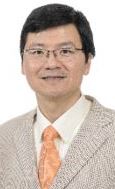Innovations in Smartphone MIMO Antenna Design Using Characteristic Modes
Characteristic mode analysis (CMA) has gained considerable attention within the antenna community in recent years. Its popularity is not only confined to academic publications, even the industry has begun to adopt it to solve practical antenna problems, as reflected by CMA being marketed as an attractive feature in many major full-wave simulation software, including CST, Altair FEKO and Ansys HFSS. One major reason for its popularity is that apart from a powerful tool to explain how an antenna works, it is also increasingly being developed for antenna design, relying on the physical insights it provides to achieve unconventional solutions.
In this talk, I will focus on introducing some recent progress in applying CMA for designing innovative multiple-input multiple-output (MIMO) antennas for smartphones. Firstly, I will describe the formidable challenge of achieving well-performing MIMO smartphone antennas in low cellular bands. In particular, the small electrical size of the conventional rectangular smartphone chassis offers only one resonant characteristic mode (CM) below 1 GHz. Therefore, it does not have the required electromagnetic degrees of freedom to realize uncorrelated multiport MIMO antennas. However, minor modifications of the chassis, as well as proper consideration of existing components, enable multiple CMs to be made resonant (e.g., those illustrated in Figure 1). These additional modes can then be excited by appropriate feeds to enhance bandwidth and/or to design two or even three antenna ports. Finally, I will show that smartphone antennas can also be made more robust against the influence of user by appropriate selection of the resonant CMs.
Date and Time
Location
Hosts
Registration
-
 Add Event to Calendar
Add Event to Calendar
Loading virtual attendance info...
- Contact Event Host
- Co-sponsored by ECTI Thailand
- Starts 16 May 2022 10:29 AM UTC
- Ends 01 June 2022 09:00 AM UTC
- No Admission Charge
- Menu: Non-IEEE member
Speakers
 Buon Kiong Lau of Division of Communications Engineering, Department of Electrical and Information Technology, Faculty of Engineering, Lund University
Buon Kiong Lau of Division of Communications Engineering, Department of Electrical and Information Technology, Faculty of Engineering, Lund University
Biography:
Dr. Buon Kiong (Vincent) Lau is a Professor and the Head of the Communications Engineering Division at the Department of Electrical and Information Technology.
Dr. Lau obtained the Bachelor of Electrical and Electronic Engineering from the University of Western Australia in 1998. From 1998 to 2002, he did his Ph.D. at Curtin University of Technology, Australia, on the topic "Applications of Adaptive Antennas in 3G Mobile Communication Systems". From January 2003 to April 2004, he was a Guest Research Fellow at the Department of Signal Processing, Blekinge Institute of Technology. He was a Research Fellow (May 2004-May 2007) at the Department of Electroscience, Lund University, and later an Assistant Professor (June 2007-October 2010) and an Associate Professor (Nov 2010-Mar 2016) in the Department of Electrical and Information Technology (formerly Department of Electroscience). Between July 2010 and December 2014, he served as the Director of Postgraduate Studies at the same department.
Dr. Lau was an Associate Editor (AE), Senior AE and Track Editor for the IEEE Transactions on Antennas and Propagation (TAP) between 2010 and 2016. He received an award from the same journal for exceptional performance as an Associate Editor during 2014-2015. He was also a Guest Editor of the 2012 TAP Special Issue on MIMO Technology, the Lead Guest Editor for the 2016 TAP Special Issue on Theory and Applications of Characteristic Modes, and a Guest Editor of the upcoming IEEE TAP Special Issue on Artificial Intelligence in Radio Propagation for Communications. He was the Lead Guest Editor of the 2013 Special Cluster on Terminal Antenna Systems for 4G and Beyond for the IEEE Antennas and Wireless Propagation Letters, as well as the Lead/sole Guest Editor of the IEEE Antennas and Propagation Magazine Special Issue on "Characteristic Modes: Into the Mainstream and the Path Beyond".
From 2007 to 2011, he was a Co-chair of Subworking Group 2.2 on "Compact Antenna Systems for Terminals" (CAST) within EU COST Action 2100. He was the chair of Subworking Group 1.1 on "Antenna System Aspects" within EU COST Action IC1004 between 2011-2015. From 2012-2015, he was the Regional Delegate of European Association on Antennas and Propagation (EurAAP) for Region 6 (Iceland, Norway, Sweden). He is also a member of the Education Committee in the IEEE Antennas and Propagation Society (AP-S), where he was also the Coordinator of the annual AP-S Student Design Contest (3-year term between 2013-2015). He joined the New Technology Directions Committee of AP-S in 2021. In 2014, Dr. Lau initiated the international Characteristic Modes Special Interest Group (CM-SIG) (www.characteristicmodes.org), which aims to promote new breakthroughs and foster coordination/ collaboration in CM research. Currently, over 90 research groups/companies are members of the SIG. Additionally, he served as a Distinguished Lecturer for the IEEE AP-S during 2017-2019. Since 2022, he is an IEEE Fellow.
Dr. Lau's primary research interests are in various aspects of multiple antenna systems, particularly the interplay between traditionally separate disciplines of antennas, propagation channels and signal processing.

